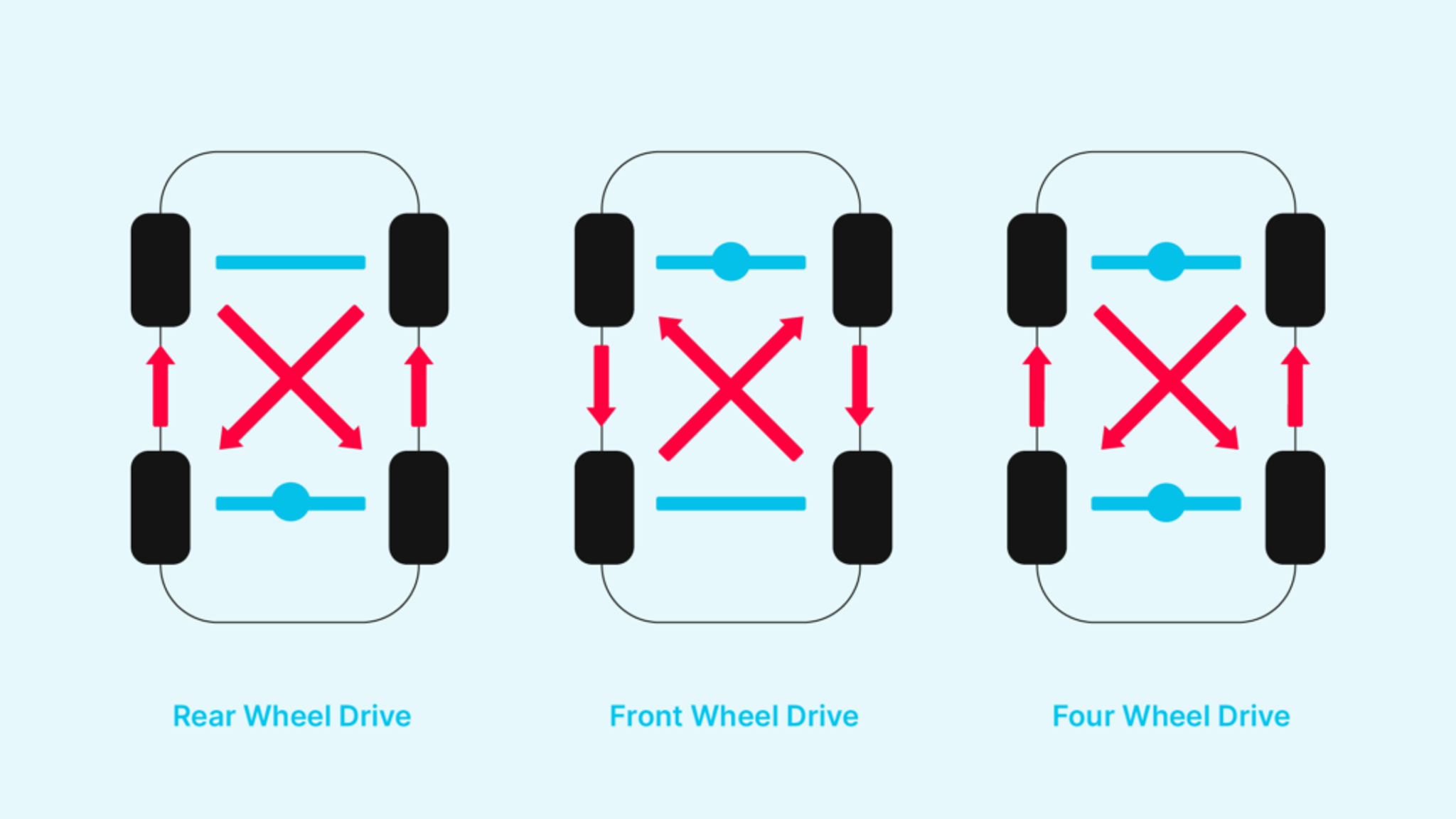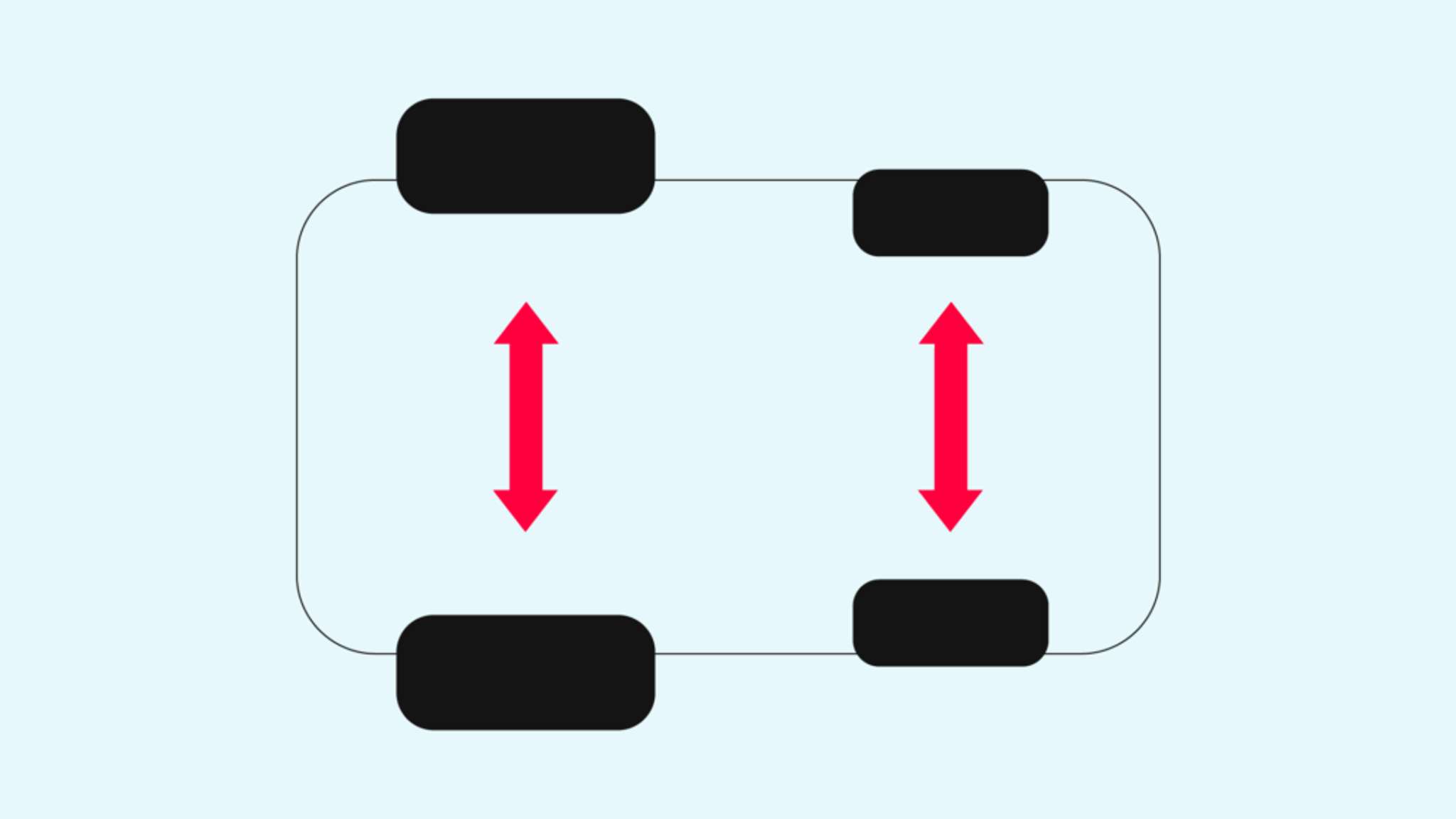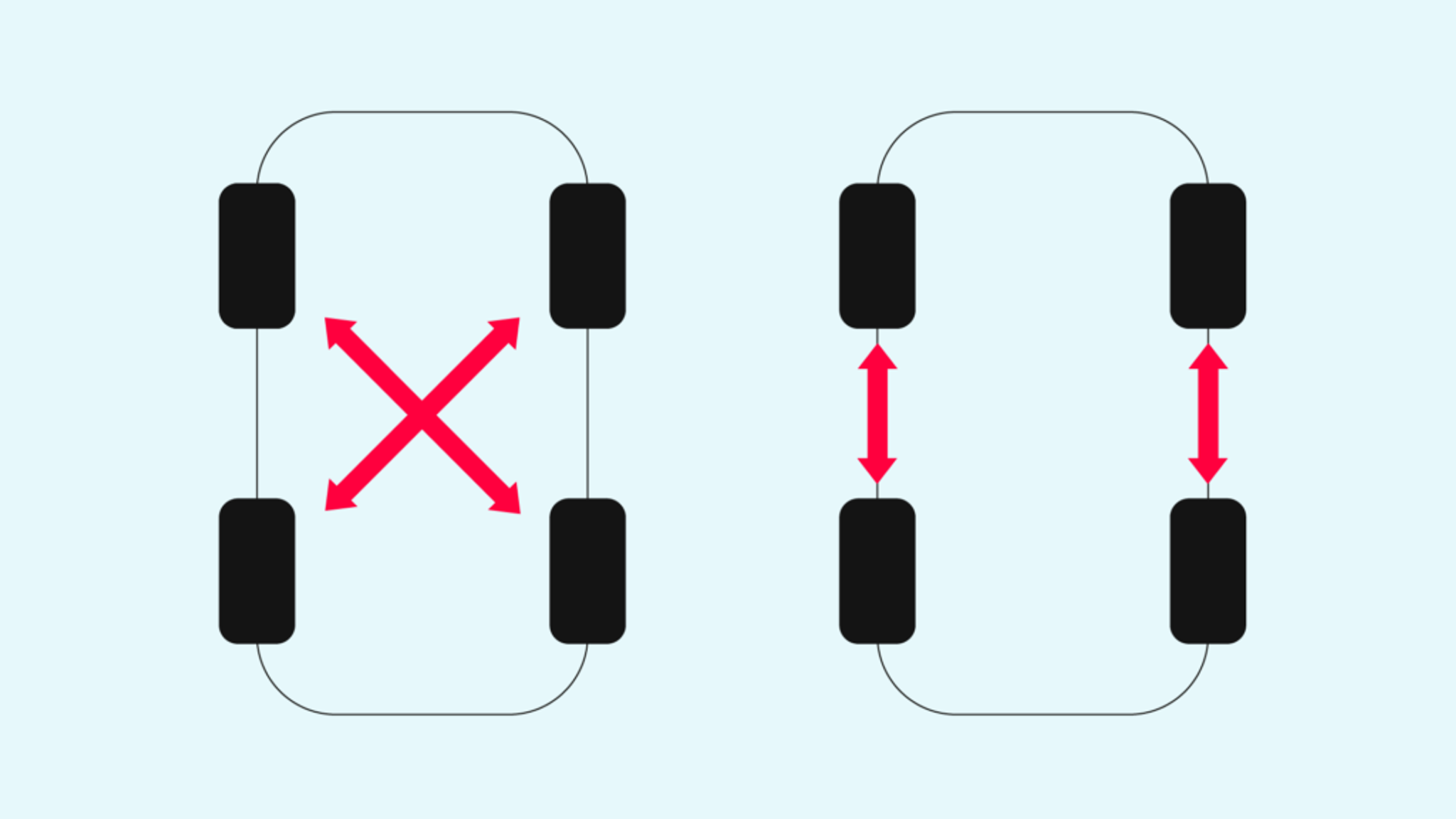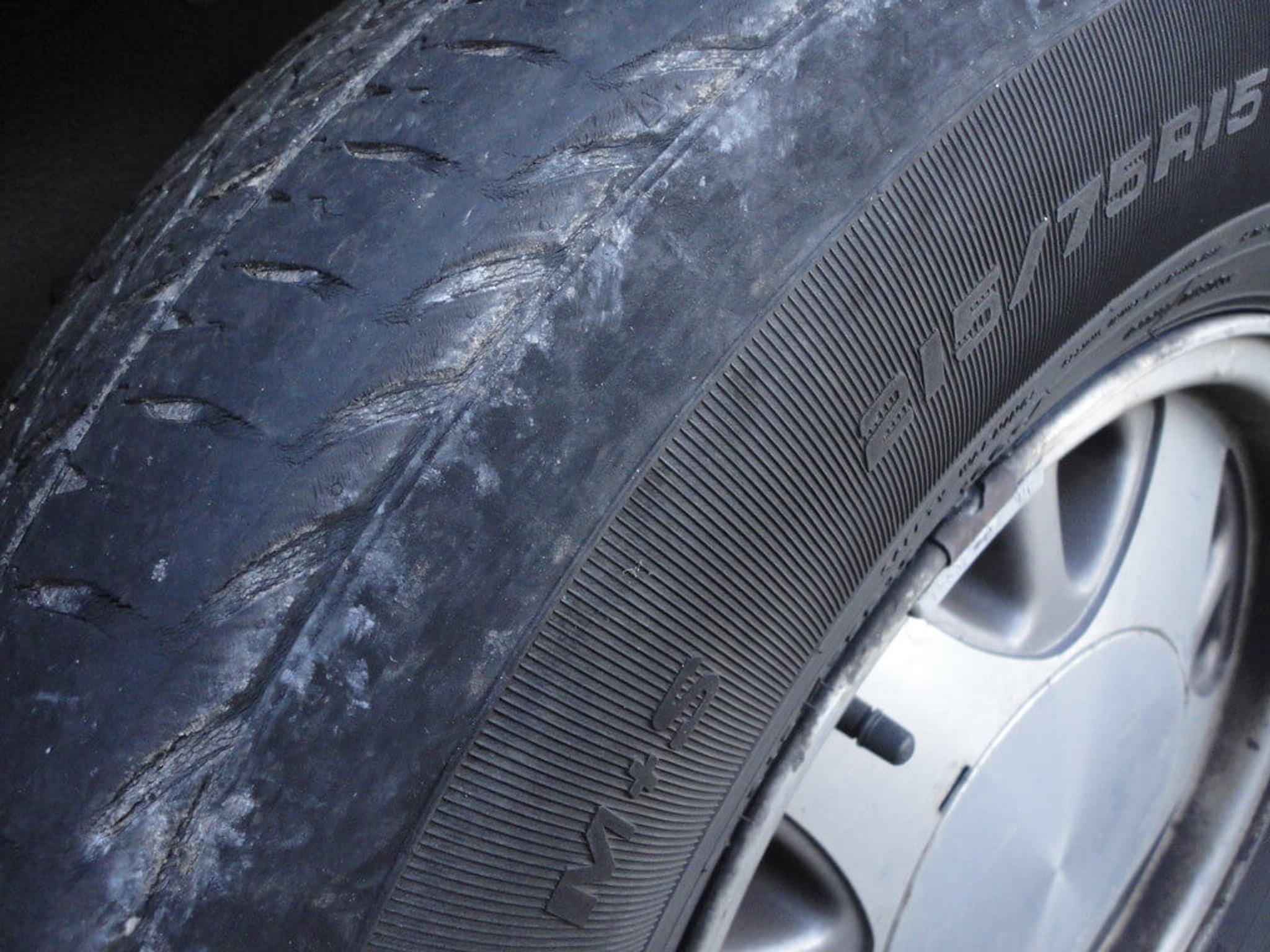
Tire wear depends on the wheel alignment, suspension, and driving habits. Conditions differ even between axles, making tire rotation essential to distribute pressure evenly and prevent damaging the tires prematurely.
You should rotate your tires every 6 months or 3,000-6,000 miles (5,000-10,000 km), but intervals vary by vehicle type and driving conditions. What are the key things to know about tire rotation, and what can you do to extend their lifespan?

Try our VIN Decoder!
To learn more about any used car, check its VIN on our VIN Decoder page!
Types of car tires
It’s helpful to be able to recognize different tire tread patterns to understand how tire rotation works.
Each tire tread design has its pros and cons, allowing drivers to choose tires according to their need for performance, comfort, and durability:
- Symmetrical tires are the most common because of their low price, durability, and comfort. Both halves of a symmetrical tire have identical patterns, therefore, its efficiency is irrespective of position or direction, and you can rotate the tires independently.
- Directional tire tread is performance-oriented, as it provides better traction and aquaplaning resistance. The V-shaped grooves create a directional design, meaning tires must remain on the same side of a vehicle during rotation, and front-to-rear is the only possible rotation pattern.
- Asymmetric tire tread pattern features different tread designs on each side of a tire. Tires have “inside” and “outside” directions on sidewalls for mounting.
Car maintenance and tire rotation
While most people maintain engine, suspension, and other systems regularly – tire rotation is often neglected. For most drivers, it doesn’t look important enough to visit a repair shop just for tire rotation, therefore, planning it with other scheduled maintenance is a great idea.
We recommend rotating your tires with each oil change because of similar intervals. Take a look at our car maintenance checklist for more maintenance scheduling tips and ideas.
Tire rotation patterns
You must follow specific patterns when rotating tires, otherwise, the rotation can be pointless and even harmful.
The point of patterns for different situations is to diversify positions of each tire as much as possible without compromising traction, therefore, a correct pattern improves the efficiency and longevity of each tire.

Rear-wheel-drive vehicles
The best tire rotation pattern for rear-wheel-drive vehicles is rearward cross. Rear tires go to the front on the same side, while front tires should be installed on the opposite sides of the rear axle. This pattern only works with non-directional and same-sized tires.
Front-wheel-drive vehicles
The forward cross tire rotation pattern for front-wheel-drive vehicles is similar to the previous one. You need to move the front wheels to the same side on the back axle and move rear wheels to the front diagonally. This pattern also works only with non-directional and same-sized tires.
All-wheel-drive vehicles
Since the rear end of a car is usually lighter than the front, the tire rotation pattern for AWD, 4WD, and 4X4 drivetrains is the same as for RWD cars – move the rear wheels to the front directly, and front wheels to the rear diagonally.
5 tire rotation

Many cars still have a full size spare tire, which often stays untouched for years. Tires lose essential characteristics after 4-6 years, so including your spare tire into the rotation instead of letting it rot in the back will extend the life of all your tires and ensure the spare wheel is always inflated and safe to use.
Differently sized wheels

Some high-performance vehicles are equipped with differently-sized wheels on the front and rear axles to improve acceleration and cornering. In this case, you have to use the side-to-side pattern. Bear in mind this pattern only works with non-directional tires, otherwise you’ll have to remount them on rims on the opposite side.
Universal tire rotation patterns

While previous patterns are optimal for specific configurations, they aren’t the only choices. Depending on whether you use non-directional or directional tires, you can choose an X-pattern or front-to-back pattern. The X-pattern only works with non-directional tires, as all wheels interchange diagonally, while the front-to-back tire rotation is switching wheels on the same side of a vehicle.
Many heavy duty vehicles even use 6-wheel configurations with double wheels in the back to support more weight. Their tire rotation patterns are different, as you must include all tires. Rotating tires in circles on each side of a vehicle is a common way to go because it works with all tread designs.
How to save money on tires
Good tires are expensive but also essential for ensuring your safety. Don’t save money by buying cheap or used tires – get high quality tires and preserve them instead. You can get a few additional years of service with 3 simple tips.
Have a DIY tire maintenance routine
You can’t install new tires and forget about them, expecting the best longevity. Perform routine DIY tire maintenance to ensure they’re in good condition.
The most important thing is checking the tire pressure, as it may drop due to leaks and temperature changes. Underinflated tires increase rolling resistance, negatively impacting fuel consumption, handling, and tire wear. Even if your vehicle is equipped with a tire pressure monitoring system (TPMS), sensors or the system itself can fail, so don’t rely on it alone.
Visually inspect each tire every time you check their pressure. Bulges, nails, or cracks are dangerous, meaning you need to repair or replace your tire.
Change your driving habits
The more you drive, the sooner your tires wear out, especially if you play with the gas and brake pedals too much.
Many people drive faster to save time, resulting in increased tire, engine, suspension wear, and higher fuel consumption. Usually, fast driving will only save you minutes, but driving slower will drastically reduce your repair and tire expenses.
Don’t ignore uneven wear patterns

Uneven wear patterns warn you about problems with your car. Tires should stick to the road evenly, otherwise, traction worsens and tire wear increases. Tires wear unevenly because of suspension problems, underinflated or overinflated tires, or bad alignment.
Uneven wear can also appear between axles because tires on driving axles wear out faster. Regular tire rotation usually prevents this issue.
After noticing uneven wear, take your car to a repair shop to diagnose and solve the problem before you’re forced to get a new set of tires.

Check your VIN
Avoid costly problems by checking a vehicle's history. Get a report instantly!
Frequently asked questions

Article by
Evaldas Zabitis
Evaldas has been writing since middle school and has had a passion for cars for as long as he can remember. Right after getting his driver’s license, he spent all of his savings on shoddy cars so he could spend time fixing, driving, and selling them. Evaldas is always interested in automotive technical innovations and is an active participant in automotive community discussions.
